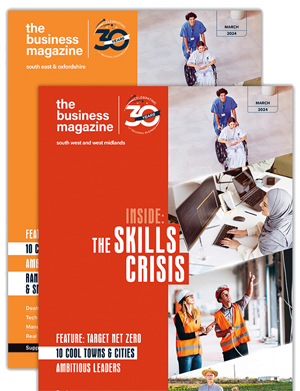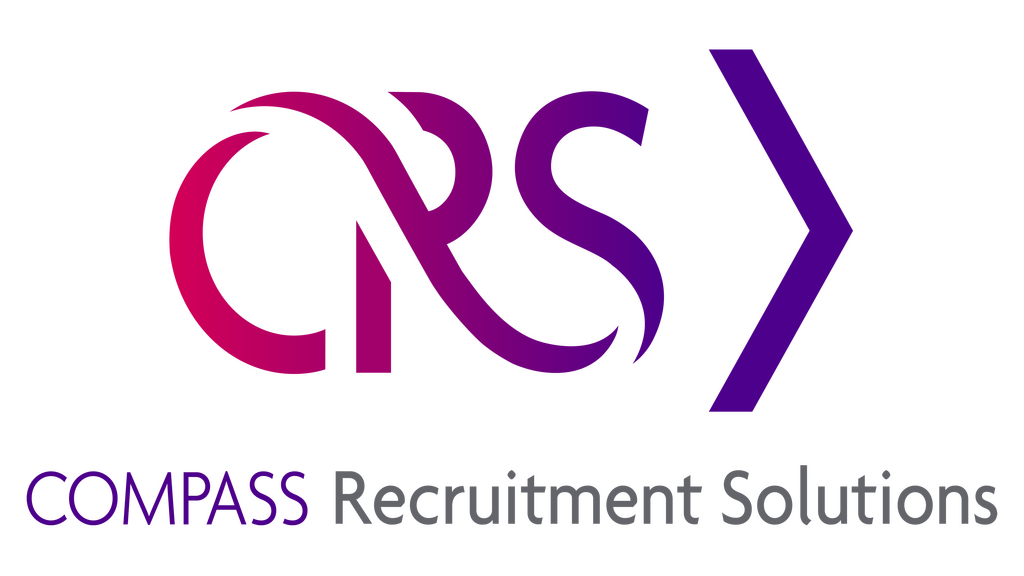10 Top Tips - Returning to Work (or Not)

As lockdown measures begin to lift, many businesses have returned or will be gearing up to a return to work. Given the potential risks and claims associated with getting a return to work (or non-return to work) wrong, businesses need to take time now to carefully plan their next steps.
BPE Solicitors have collated the 10 most popular employment law issues and practical steps for employers to consider.
- Communication with employees regarding return to work plans and arrangements
As the situation and guidance is ever-evolving and there is no “one size fits all” solution for businesses, it is key to have a transparent and ongoing dialogue with your employees and any recognised trade union(s) regarding your return to work plans. Consultation is key and even more important if you need to agree changes to terms and conditions, for example, split shifts or staggered start and finish times.
Consider how you will communicate information to employees before they return to work (e.g. via email, Zoom or online training) and afterwards (e.g. via notices, your intranet or (socially distanced) verbal briefings), and emphasise that you will continue to review and adapt any return-to-work measures as required.
Terminology and messaging are also important, e.g. some businesses are using the phrase “physical distance” rather than “social distance” in order to make clear that social interaction can still continue, albeit at a distance.
2. Health and Safety
Employers must comply with their statutory and common law obligations to ensure employees’ safety so far as reasonably practicable. In simple terms, employers must assess risks and then establish and implement a safe system of work.
Businesses will be expected to follow the COVID-19 Secure guidelines, applicable guidance for their industry (the government has issued 8 different guides) and any guidance from the HSE. The guidelines include:
- encouraging home working, where possible;
- carrying out a COVID-19 risk assessment, in consultation with workers or trade unions;
- maintaining 2 meters social distancing, wherever possible;
- managing transmission risk;
- increasing hygiene measures, including additional hand-washing and sanitization stations; and
- reinforcing cleaning processes.
Risk Assessments should consider factors such as: access in and out of the premises (including lifts, stairs, door handles), proximity of desks and workspaces, travel to and from work, risks posed by the location of the premises (e.g. if the office is in a busy location), whether staff facilities (such as toilets, showers, cafes, gyms etc) will remain open and how you will minimize the risk from third parties attending the premises.
Give particular consideration to “clinically vulnerable” employees (e.g. over 70s, diabetics, people with liver disease and pregnant women) when assessing risks, and do not forget the health, safety and welfare of employees who are continuing to work from home.
Remember that risk assessments must be in writing if you have 5+ employees and should be published if you have 50+ employees.
3. Assessing who will return and when
The government’s Plan to Rebuild emphasises that workers should continue to work from home, wherever possible, to help prevent the spread of infection and minimise overcrowding on transport and public places. As such, you must carefully consider which (if any) employees need to return to the workplace at this time.
When assessing who will return, there are numerous factors to consider, including the following:
- How many staff can you safely accommodate based on your health and safety measures?
- If you need to limit the number of staff in the workplace at any one time, how will you manage and monitor who attends?
- Request volunteers first, trying to ensure that there is a sufficient spread of volunteers to enable the business to function effectively and considering how fire wardens’ and first aiders’ duties may be covered.
- If you need certain key staff to return or have insufficient volunteers, consider how to fairly select who will return.
- Consider allowing employees who are vulnerable, have ongoing caring/childcare responsibilities or whose commute puts them at particular risk to remain working from home or on furlough.
- Could you offer a rotational return to work, so that all employees have some “phasing in”?
- Try to reduce the number of people employees have regular contact with at work, e.g. by changing shift patterns/rotas to keep the same “team” together each time.
- “Extremely vulnerable” employees (e.g. solid organ transplant recipients and people receiving chemotherapy) should continue to shield (until at least the end of June) and must NOT be permitted to return to the workplace.
4. Refusals to return to work
As a team we have been advising on this issue, as, after prolonged home working or furlough, many individuals are anxious about returning to work. Whilst you can mitigate this by involving staff in return to work proposals and promptly addressing concerns raised, some staff may refuse to return or to perform certain aspects of their roles.
If there is no reasonable basis for such refusal, this may be a disciplinary matter. However, you must carefully consider the reasons for the refusal to ensure that you are not exposing yourself to potential constructive dismissal, health and safety or whistleblowing claims which will be costly, time-consuming and reputationally damaging.
5. Travel to work and business travel
Employees who cannot work from home will need to travel to work. As the Plan to Rebuild advises that travel to work should preferably be by foot, bike or own transport, and public transport should be avoided wherever possible, employers should support this, e.g. by expanding bicycle storage facilities, changing facilities and car parking, where possible.
Where employees have to use public transport to get to work:
- consider staggering start and end times to minimize staff commuting at peak travel hours;
- reiterate the government recommendation to use “face-coverings” and social distancing measures; and/or
- consider whether they can continue to work from home or remain on furlough.
Where your staff are usually mobile and travel within the UK or abroad for work purposes, consider alternatives to this (including meetings via remote technology) and/or prohibiting non-essential work travel. You should also investigate whether your business travel insurance covers scenarios that could arise due to COVID-19, such as employees becoming stranded abroad as a result of future travel restrictions or becoming ill while outside the UK.
6. Mental health
Mental health and “lockdown burnout” have been highly publicised during lockdown, but this will remain a key topic going forwards as employees adjust to a “new normal” while dealing with the difficulties of reestablishing routines, childcare challenges (with ongoing school closures) and potential ill-health and bereavement.
Ensure that you have a plan in place to support the mental health of all your staff, including those working at home, in the workplace or on furlough. Communicate this to staff and remind them of the support available, such as Employee Assistance Programmes, mental health first aiders and management and peer support schemes. If you do not have these resources already, consider introducing them, and remember there is a duty to carry out a risk assessment for your employees in respect of mental health.
7. Holidays
Devise a strategy for dealing with holiday during the pandemic period, especially in relation to furloughed employees.
Government guidance has now confirmed that: statutory holiday (of 5.6 weeks) accrues during furlough; holiday can be taken during furlough (albeit employers must top up furlough pay to normal pay); and employers can require employees to take holiday during furlough (by giving them twice the period of notice as the period of holiday required to be taken). However, requiring furloughed employees to take their full, accrued entitlement during furlough could well be open to later challenge in light of:
- the amendment to the Working Time Regulations to allow employees to carry forward (for 2 holiday years) up to 4 weeks’ holiday which they have been unable to take due to COVID-19; and
- the government guidance that, before requiring employees to take holiday during furlough, employers should consider whether any restrictions the furloughed employee is under would prevent them from resting, relaxing and enjoying leisure time, which is the “fundamental purpose” of holiday.
As such, employees may still have a substantial amount of accrued holiday to take following their return to work, and you will need to consider how best to manage and communicate this to employees.
8. Post furlough planning
Whilst the Coronavirus Job Retention Scheme (CJRS) has preserved many jobs and provided employers with breathing space and essential financial support, employers will be required to share the cost of the scheme from 1 August and the scheme will then end completely in October. Employers must, therefore, carefully consider their plans post-furlough, including whether their pre-COVID-19 business and staffing structures remain viable, whether changes are required to job roles, working hours or pay and/or whether any restructuring or reduction in headcount may be required. Options to consider include:
- Bringing employees back to work on their previous terms and conditions.
- Keeping employees “laid-off” if their employment contracts contain a lay-off clause or if you included such a clause in your furlough agreements. Whilst this may be a “cheap” option initially, please note that:
- holiday will accrue as normal during lay off (and could be requested, taken and paid during that period); and
- if employees are laid off for 4 consecutive weeks or for 6 weeks over a rolling 13-week period, they can resign, treat themselves as redundant and a statutory redundancy payment will be payable unless you issue a counter notice.
- Putting employees on short-time working, if their employment contracts contain a short-time working clause. (Please note that the same risk arises regarding a potential redundancy payment.)
- Asking employees to agree a change to their terms and conditions e.g. agreeing to take a period of unpaid leave; agreeing to reduce their working hours and receive pro rata pay; or agreeing to do the same working hours but at a reduced rate of pay. (Please note that collective consultation will be required if you propose to dismiss and re-engage 20+ employees if they refuse the change.)
- Offering unpaid (or part-paid) leave or sabbaticals.
- Restructures and redundancies (see below).
9. Redundancies
If you are considering 20 or more redundancies at one “establishment” within a 90-day period, you will need to undertake collective consultation in addition to a normal “fair” redundancy process. This will involve submitting an HR1-Form to the Secretary of State, arranging the election of representatives (unless you have existing trade union or appropriate employee representatives to consult with) and then consulting for at least 30 days before the first dismissal. This increases to 45 days before if 100 or more redundancies could be involved.
Given the time required to comply with these obligations and the potential difficulties with carrying out “remote” election and consultation meetings, it would be wise to begin this process soon, so that the CJRS can assist with your wage costs during consultation and notice periods.
10. Updating Policies and Procedures and Contracts of Employment
Given the seismic changes in society and employment over recent months, it is important to review your policies, procedures and employment contracts to ensure that they are compliant and fit for purpose both in our current “new normal” and any future lockdown. Key policies that you may want to introduce or update include:
- COVID-19 and Pandemics (potentially including voluntary/mandatory workplace testing)
- Health and Safety (e.g. to reflect Covid-19 Secure guidelines)
- Sickness and Absence
- Unpaid Leave
- Performance Management
- Disciplinary and Grievances (e.g. to reflect recent ACAS guidance re remote meetings)
- Homeworking
- Flexible Working (e.g. potentially relaxing the statutory regime on a temporary basis)
BPE Solicitors has developed a comprehensive series of guidance notes to support businesses during COVID-19. Please click here for guidance and support for your business.
To receive a weekly email update covering the latest developments and things businesses should be considering, email [email protected]
With many businesses starting to return to operation (albeit with stringent procedures in place to protect their teams) and others having continued to operate in different guises, we are all now starting to look forwards.
The way businesses operate in the future will undoubtedly change but we can all help each other.
Join us in our new campaign #FutureNow to share your expertise and experience. Click here for more information and search #FutureNow for new content each week.
If you need any specific advice on these or any other employment issues, please do not hesitate to contact Sarah Lee ([email protected]) or Heyma Holmes ([email protected]).













